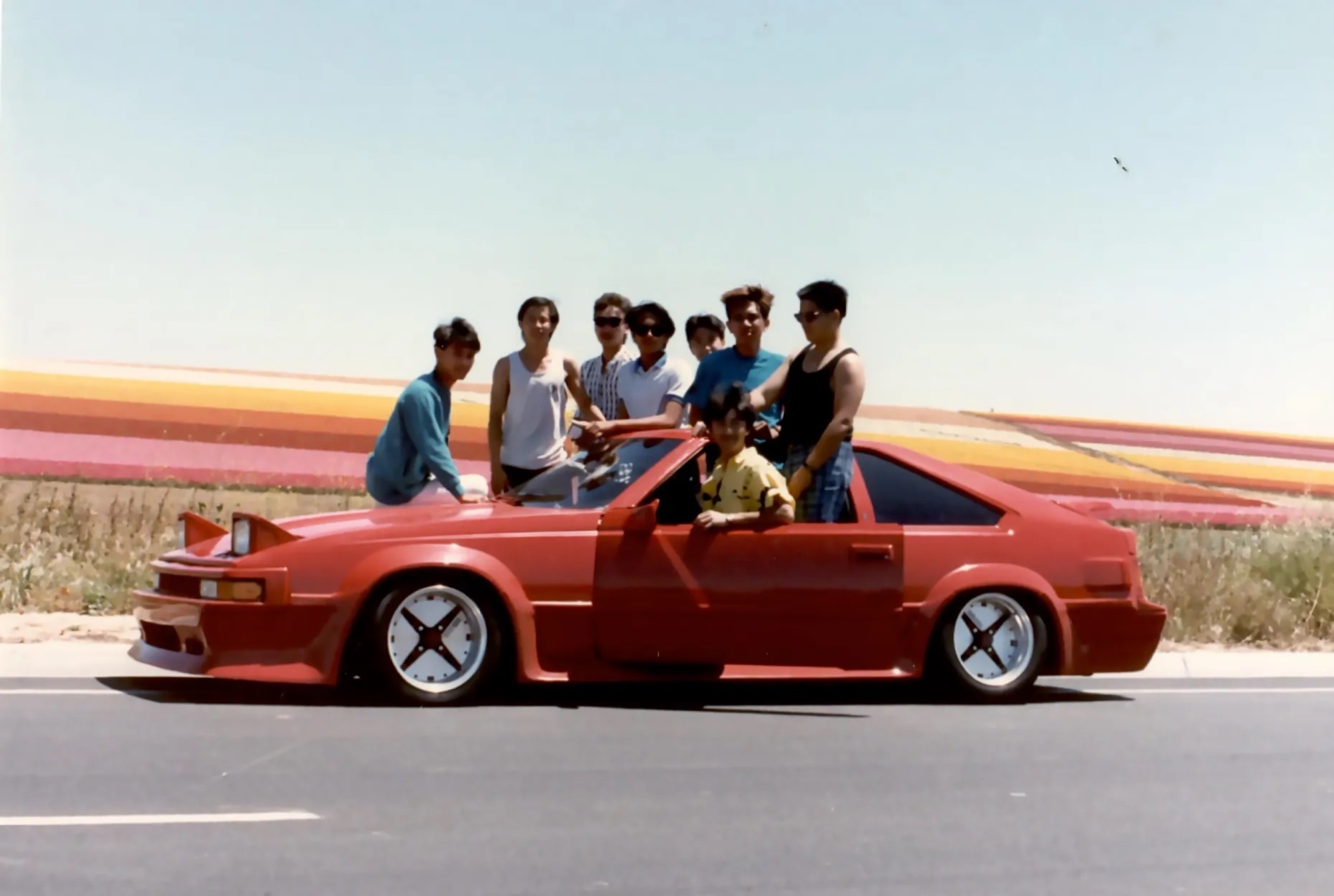Elizabeth Ai’s six-year journey to create New Wave (2024), a documentary capturing the experience of Vietnamese Americans’ postwar resettlement in the 1980s, was halted in March 2020 due to the COVID-19 pandemic. She shifted her focus from directing to archiving, sifting through family photographs only to bump up against the limitations of Vietnamese-American archives. She opened up her research to the internet, creating an Instagram page and inviting others to share family photos and videos from their personal collections. In the resulting pictures, aunties and uncles sport spiked permed hair and don shoulder pad-fitted blazers while dancing emphatically to 1980s New Wave disco, capturing the essence of this fleeting cultural moment.
For Ai and many other Vietnamese Americans who grew up in the 1980s, New Wave was the soundtrack of their childhood. But if the connection between Euro synthpop bands such as Depeche Mode and Vietnamese American refugees in Orange County seems like a stretch, you’re not alone. Elizabeth called up family members to explore those connections, finding that they encountered these synthpop records alongside Viet New Wave covers/cassette compilations at record shops in Phước Lộc Thọ, or Asian Garden Mall, in Westminster, California. Many refugees had settled in Orange County because of its warm climate and proximity to Camp Pendleton, the first refugee camp to open for resettlement through church sponsorship, leading to the creation of many such places where cultures mixed.
The documentary and its accompanying book, New Wave: Rebellion and Reinvention in the Vietnamese Diaspora (2024), rewrites the narrative of Vietnamese Americans after the war in advance of the 50th anniversary of the Fall of Saigon. Western popular culture has historically represented the Vietnamese people as either victims (refugees from the South) or enemies (communists from the North), gangsters or model minorities, leaving little room for nuance in depicting the experience of the over 45 million people who were forced to flee their home country. For refugees born in Vietnam who came to the United States between the ages of five and 12, or the so-called “1.5 Generation,” music allowed an escape from the binary between home and school, where they were pressured to uphold Vietnamese traditions and assimilate into American culture simultaneously.
New Wave, designed by Mỹ Linh Triệu Nguyễn of STUDIO LHOOQ, captures this hybrid identity well by toggling between a photo archive — featuring full spreads of family photos and bold cassette tape cover designs — and an essay collection, including coming-of-age stories from Ai and other Vietnamese scholars that capture the movement’s progression through the decades. The project highlights cultural icons such as Lynda Trang Đài, whose performances in variety shows such as Paris By Night (1983) sparked international interest in New Wave style and music. Her ability to combine traditional tropes of Vietnamese music with the fresh, upbeat synths of Eurodisco captured the height of V-pop’s broad appeal to a multigenerational, bilingual crowd.
“Our rebellion wasn’t just a protest, but rather, a symphony and a dance of liberation,” sociologist Thao Ha writes. “In those moments, we weren’t just shaping our culture; we were shaping a transformative world, one where being Vietnamese American was a celebration of resilience and individuality.” In accordance, New Wave also expands beyond its initial function as a documentary project, including such autobiographical details as Ai reconnecting with her mother in a heartfelt yet imperfect reunion during filming. Despite the odds, New Wave’s resounding presence in this generation’s resettlement story illustrates its key role in bridging cultural gaps, coping with generational trauma, and creating safe places to experience joy.


New Wave: Rebellion and Reinvention in the Vietnamese Diaspora (2024) written by Elizabeth Ai and published by Angel City Press, is available for purchase online and through independent booksellers.

